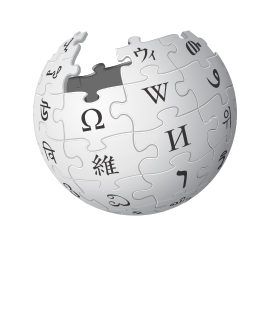Costa Brava. The discovery of paradise (1870-1936). From Blanes to Cap de Creus, identity of a landscape
Dates: From April 15, 2023 to September 17, 2023
Opening: Saturday, April 15, at 12 noon
Curated by: Mariona Seguranyes
Production: Girona Museum of Art
Presentation
From Blanes to Cap de Creus, identity of a landscape
The exhibition at the Girona Art Museum, with the subtitle From Blanes to Cap de Creus, identity of a landscape, is the result of a search of more than three years and proposes an itinerary ordered geographically by the times and places where the artists contributed, voluntarily or accidentally, to gradually shaping and consolidating the “Costa Brava” brand. It presents some sixty paintings and documents from nearly fifty artists who, from 1870 to 1936, made the Costa Brava a subject of their work and, in some cases, the embodiment of an ideal.
The works come from numerous private collections and institutions in the country, such as the National Art Museum of Catalonia, the Reina Sofía National Art Center Museum, Madrid, the Sorolla Museum, Madrid. Museo Carmen Thyssen Málaga, Museo de Montserrat or Real Academia de Bellas Artes de Sant Jordi. And there are also documentation from the Library of Catalonia, the Carles Fages de Climent Library and the various archives of the various towns on the Costa Brava, such as the Blanes Archive, Palafrugell Archive, Tossa de Mar Archive, among others.
From the Costa Brava to the Costa Brava, in six exhibition areas
The exhibition, through 6 exhibition areas, traces the birth of the Costa Brava concept and reveals how the artists fed it through their works.
The first deals with “The Costa Brava before the Costa Brava” with a large selection of works by artists, landscapers and pleinairistas, who traveled the north coast looking for inspiration before being baptized as Costa Brava. Examples are the cartoonists Lluís Rigalt or Hedwige Alphonse Delamare, and the landscape artists Modesto Urgell, Baldomer Galofre, Joan Roig y Soler, Jaume Vilallonga, Fèlix Mestres and Francesc Miralles. From this first area, a sketchbook, hitherto unpublished, by Ramon Martí Alsina stands out, which testifies to the artist’s stay in Sant Feliu de Guíxols, in 1892, or the painting Coast with cliffs and shellfish, from the Thyssen collection, a landscape from Cap de Creus, which has now been identified as the Acequia de la Cal, in Cala Jóncols and which is the direct testimony of Martí Alsina’s passage through Cap de Creus.
In the area of “An ideological baptism”, a letter and a postcard from Bonaventura Sabater addressed to Eugeni d’Ors stand out, written in 1915 and 1916 respectively from the El Paraíso farm, in Fornells, which indicates this space as one of those closely linked to the Coast brava.
The field “Painters on the Costa Brava. Identity Builders”, is dedicated to all those artists who contributed to the imaginary creation of the Costa Brava and its dissemination. On the one hand, there are the artists who elaborate their works consciously in the line of idealization of Hellenic roots and identification of the country with this part of the coast linked to the initial ideology of Costa Brava, sister of the noucentista, such as, among others, Joan Llaverias, Juan Junceda, Nicolás Raurich, Juan Llimona or Juan Colón.
Also gathered are the artists who, once their work has been produced, critics or writers identify what they have painted as Costa Brava. This is the case of Joaquim Mir, Francisco Gimeno, Baldomer Gili Roig or Josep Mompou, among others.
An unprecedented photograph of the surroundings of Mas Juny with Josep Maria Sert, Salvador Dalí, Gala and Dorothy Webster, wife of Nicholas Woevodski, among others, gives us what the Costa Brava was like in the 1930s, a meeting point at the level of Europe.
The final two areas are dedicated to two artistic centers of great relevance on the Costa Brava, Tossa de Mar and Cadaqués, Cap de Creus. A series of creators come to these two points of artistic confluence, completely outside of this concept of country, purely in search of light and nature. This is the case of those who opt for the path of the avant-garde such as Salvador Dalí, Picabia or André Masson who end up in these towns on the Costa Brava due to friendship between the painters themselves or because there were already promotion channels for the Costa Brava and some hotels brought by foreigners that facilitated the communication routes through Europe, as is the case of Tossa de Mar.
The exhibition closes with the topic “Destruction of paradise. The first cries of alert” dedicated to the pro-Costa Brava conference of 1935, from which the Board of the Costa Brava arose, in order to protect it and set limits to its growth. But unfortunately the Civil War overthrew all these good intentions. The words of Rafael Benet, written on the occasion of the Pro-Costa Brava conference, close the exhibition: «No big hotels. Nothing too compound plantings. The Costa Brava does not want noise. A little more hygiene: a little more neatness.”
Two exhibitions and a catalog
Costa Brava. The discovery of paradise 1870-1936, is a project, devised and led by the Girona Art Museum and shared with the Empordà Museum, which unfolds into two exhibitions, one in Girona and the other in Figures. Both exhibitions share a graphic image, museographic design and a single catalogue, the first of the exhibition trilogy, which will include all the works from both exhibitions, the one at the Girona Museum of Art and the one at the Empordà de Higueras Museum.
The catalog includes texts by the curator and art historian, Mariona Seguranyes, and by fellow art historians Susanna Portell and Gloria Bosch, the latter dedicated to Tossa de Mar at the beginning of the 20th century, a pole of attraction for relevant European artists during the period between world wars.
With the aim of expanding the information and experience in the exhibition, a free audio guide has been produced with which you can enter the world of both exhibitions, that of the Girona Art Museum “De Blanes en el Cabo de Creus, identity of a landscape”, and the one exhibited at the Museo del Empordà in Figueres “When Cadaqués was a party”.






